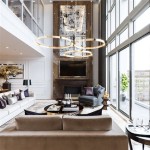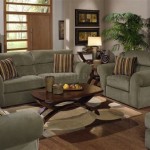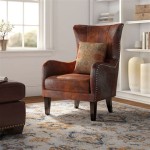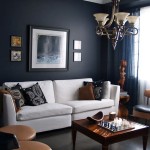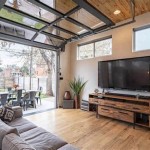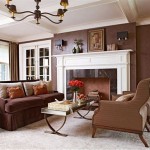Royal Blue Decorations For Living Room: A Comprehensive Guide
Royal blue, a shade synonymous with sophistication and regality, offers a powerful and versatile option for decorating living rooms. Its depth and richness can transform a space, adding drama and character when used correctly. This article explores various ways to incorporate royal blue into living room decor, examining its potential applications and providing guidance on complementary colors and design strategies.
Understanding Royal Blue's Impact
Royal blue is a complex color that evokes various emotions and associations. It's often linked to trust, intelligence, stability, and confidence. Unlike lighter blues that might promote a feeling of tranquility and relaxation, royal blue carries a more assertive energy. In the context of interior design, this translates to a room that can feel elegant, formal, and even a bit luxurious. However, it’s crucial to balance royal blue with other elements to prevent the space from feeling cold or overwhelming. The amount of natural light the room receives also greatly influences the perception of royal blue. A room with limited natural light may benefit from using royal blue as an accent rather than the dominant color.
The specific shade of royal blue also plays a significant role. Variations exist, ranging from those with a slightly purple undertone to those leaning towards a more cyan-like hue. The choice should be determined by the overall aesthetic goal and the colors being paired with it. For example, a royal blue with a hint of purple can complement jewel tones, while a more vibrant royal blue might work better with crisp whites and silvers.
Implementing Royal Blue in the Living Room
There are several ways to strategically incorporate royal blue into a living room’s design. The approach taken depends on the desired impact and the room's existing features. Some common implementation strategies include:
- Accent Walls: Painting one wall royal blue can create a dramatic focal point without overwhelming the entire space. This works particularly well behind a sofa or entertainment center.
- Furniture Upholstery: A royal blue sofa or armchair can instantly elevate the room’s aesthetic. Consider using luxurious fabrics like velvet or chenille to enhance the color's richness.
- Accessories: Throw pillows, blankets, rugs, curtains, and artwork are excellent ways to introduce royal blue in smaller doses. These can be easily updated or changed as desired, offering flexibility in design.
- Area Rugs: A royal blue area rug can anchor the room and tie together other elements. Look for rugs with interesting patterns or textures to add visual interest.
- Statement Pieces: A unique piece of furniture, such as a console table or a decorative cabinet, painted in royal blue can serve as a striking point of interest.
When deciding on the scale of royal blue's presence, consider the size and layout of the living room. Smaller rooms might benefit from using royal blue sparingly, while larger rooms can handle larger amounts of the color. It is also important to consider the existing architecture of the room. Elements like crown molding or wainscoting can be highlighted with royal blue paint, adding depth and character to the space.
Complementary Color Palettes for Royal Blue
Royal blue, despite its intensity, is surprisingly versatile and pairs well with a range of colors. The key is to choose colors that create a balanced and harmonious palette. Some popular complementary color schemes include:
Royal Blue and White: This classic combination is timeless and elegant. White provides a crisp contrast that allows the royal blue to truly pop. It’s a safe and effective way to create a sophisticated and clean look. Off-whites and creams can also be used for a slightly softer effect.
Royal Blue and Gold: This combination exudes luxury and opulence. Gold accents, such as picture frames, lamps, or decorative objects, add a touch of glamour to the space. Metallic finishes in brass or bronze can also achieve a similar effect.
Royal Blue and Gray: Gray provides a neutral backdrop that allows the royal blue to stand out without being overwhelming. Lighter shades of gray can create a calm and sophisticated atmosphere, while darker grays can add depth and drama.
Royal Blue and Yellow: Yellow is royal blue's complementary color on the color wheel, creating a vibrant and energetic contrast. However, it’s important to use yellow sparingly, as too much can be overwhelming. Mustard yellow or gold tones tend to work best with royal blue.
Royal Blue and Green: Deep emerald green or forest green paired with royal blue creates a rich and nature-inspired palette. This combination evokes a sense of tranquility and sophistication. Consider incorporating plants to enhance the natural feel.
Royal Blue and Orange: Similar to yellow, orange offers a high-contrast pairing with royal blue. Terracotta or burnt orange shades can add warmth and earthiness to the space.
Royal Blue and Pink: A delicate blush pink or a bolder fuchsia can create a surprising and chic contrast with royal blue. This combination works particularly well in more modern or eclectic living rooms.
Material and Texture Considerations
The materials and textures used in conjunction with royal blue significantly impact the overall feel of the living room. Different textures can either enhance or diminish the color's impact. Some effective material pairings include:
Velvet: Velvet upholstery in royal blue amplifies the color's richness and adds a touch of luxury. The soft texture of velvet creates a comfortable and inviting feel.
Linen: Linen offers a more casual and relaxed counterpoint to royal blue. Linen curtains or throw pillows can soften the color's intensity and create a more comfortable atmosphere.
Wood: Natural wood tones, such as oak or walnut, provide warmth and grounding to the space. Wood furniture or flooring can balance the cool tones of royal blue and create a more balanced aesthetic.
Metal: Metallic accents in gold, silver, or brass can add a touch of glamour and sophistication. Metal frames, lamps, or decorative objects can enhance the color's elegance.
Glass: Glass coffee tables or decorative objects can add a sense of lightness and airiness to the room. Glass allows light to pass through, preventing the space from feeling too heavy or dark.
Leather: Leather furniture in neutral tones or a complementary color like brown or gray can create a sophisticated and masculine feel. Leather's texture adds depth and character to the space.
The incorporation of different textures is also essential. Layering textures, such as combining a velvet sofa with linen throw pillows and a woven rug, can add visual interest and depth to the living room. Smooth surfaces like glass or metal can be juxtaposed with rougher textures like wood or stone to create a dynamic and engaging space.
Lighting and Royal Blue
Lighting plays a crucial role in how royal blue is perceived in a living room. The type and intensity of lighting can significantly alter the color's appearance and impact the overall ambiance of the space. Natural light is always beneficial, as it allows the true color of royal blue to shine through. However, artificial lighting is also essential, especially in rooms with limited natural light.
Warm Lighting: Warm light, such as that produced by incandescent bulbs or some LED bulbs, can bring out the richer, warmer undertones of royal blue. This type of lighting can create a cozy and inviting atmosphere.
Cool Lighting: Cool light, such as that produced by fluorescent bulbs or some LED bulbs, can emphasize the cooler, more vibrant aspects of royal blue. This type of lighting can create a more modern and energetic feel.
Layered Lighting: A combination of different types of lighting is often the most effective approach. Layered lighting involves using a combination of ambient lighting (general room lighting), task lighting (lighting for specific activities), and accent lighting (lighting to highlight specific features). This allows you to control the mood and highlight different aspects of the living room.
Dimmers: Installing dimmers can provide even more control over the lighting in the living room. Dimmers allow you to adjust the intensity of the light, creating different moods and atmospheres as needed.
Lighting fixtures themselves can also contribute to the overall aesthetic. Choosing lighting fixtures that complement the royal blue color scheme can enhance the room's design. For example, gold or brass lighting fixtures can add a touch of luxury, while silver or chrome fixtures can create a more modern feel.
Avoiding Common Pitfalls
While royal blue can be a stunning addition to a living room, there are some common pitfalls to avoid. Overusing royal blue can make the room feel dark, cold, and oppressive. It’s important to balance the color with lighter and brighter elements to create a more inviting and balanced space. Ensure that the room retains balance through strategic color placement.
Another common mistake is not considering the existing architecture of the room. Royal blue might not be suitable for every architectural style. In some cases, it might be better to use royal blue as an accent rather than the dominant color. For example, in a room with intricate architectural details, royal blue can be used to highlight those details, while in a more minimalist room, it can be used to add a pop of color.
Failing to test paint colors before committing to a large-scale project is another common error. Paint colors can look different in different lighting conditions. It’s always a good idea to paint a small area of the wall and observe it at different times of day to ensure that you are happy with the color.
Ignoring the overall style of the home can also lead to a disjointed look. Royal blue should complement the overall aesthetic of the home. If the home has a more traditional style, it might be better to use royal blue in a more subtle way. If the home has a more modern style, it can be used more boldly.
Finally, neglecting to consider personal preferences is a significant oversight. While following design trends can be helpful, it’s important to create a space that reflects your own personal style and preferences. Choose colors, materials, and textures that you love, and don’t be afraid to experiment and break the rules. The most important thing is to create a living room that you enjoy spending time in.

Pin On Sooooosweet Zphiblue

Royal Blue And Gold Mood Board For Living Room Decor Design

31 Living Room Ideas From The Homes Of Top Designers Architectural Digest

Blue Dining Rooms 18 Exquisite Inspirations Design Tips

Interior Design Of A Living Room With Dark Blue Walls And Black Accent Coffee Table

Premium Ai Image Royal Blue Living Room Interior Design

Top 10 Royal Blue Walls Ideas And Inspiration

37 Blue Living Room Ideas To Create A Calming Oasis

45 Best Blue Rooms Decor Ideas For Light And Dark

50 Best Living Room Design Ideas For 2024 Blue Designs Rooms

